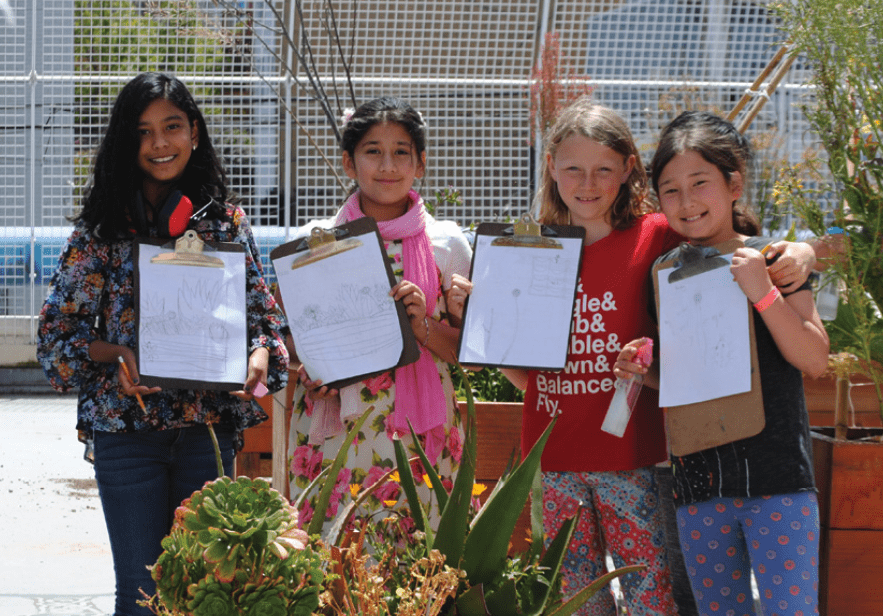This winter, I had the pleasure of participating in a panel discussion focused on environmental literacy at the annual California Curriculum and Instruction Steering Committee (CISC) Leadership Symposium. Our session featured the work of county offices of education that are supporting districts using environmental learning as the context for inclusive, relevant engagement with core subject area content while empowering student action. The four counties in the session (Santa Cruz, San Mateo, San Joaquin, and Orange County) represent the first county offices of education in the state to commit full-time staff positions focused on strategically developing and implementing environmental literacy programs for all students. Coming together to present a session at the CISC Symposium gave us an opportunity to learn from one another, and share strategies that others in the state may be able to use.
The role of county offices of education is unique in their ability to directly engage stakeholders from all levels of the public education system, from K–12 students to leadership at the California Department of Education. All four counties participating in the panel shared a range of invaluable approaches to successfully facilitating stakeholder engagement, including:
- innovative field-based student programs;
- teacher leadership institutes;
- training for administrators;
- county-level agency convenings; and
- engagement in statewide education networks.
I was both impressed and inspired by the work of our colleagues in San Mateo, San Joaquin, and Orange County. Each county’s story demonstrates innovative approaches that county offices of education can effectively use to build environmental literacy in the school system.
Santa Cruz County
In Santa Cruz County, our approach to building environmental literacy begins with the desire to create systems for equitable access to the inspiring natural resources we have in our region. Simultaneously, we are leading an ambitious County Science Initiative, partnering with Lawrence Hall of Science’s BaySci program to support all ten school districts to implement Next Generation Science Standards (NGSS). We recognize environmental literacy as an important tool for engaging all students in science, especially those lacking confidence or interest in science, by making core content more relevant to students’ lives. Our County Science Initiative includes a commitment to demonstrating the use of the local environment as a key supporting context for engaging in science practices. We believe environment-based learning supports a high-quality science program by:
- engaging students in real-world science at the local community level;
- building common prior knowledge for all students to engage in NGSS content;
- increasing equity in access to field-based science experiences and local natural resources; and
- connecting schools with community partners.

Leveraging our partnerships with districts, we are building a cadre of teacher leaders who have a deep understanding of both NGSS and environmental literacy, and who strategically represent school sites throughout the county. These teacher leaders provide support by demonstrating NGSS teaching in practice, providing mini-professional development experiences to their colleagues at school sites, facilitating science discussions with school staff, and more. K–12 teacher leaders are also paired with local environmental education partner organizations in the community to increase access to the field-based learning experiences that are vital to developing scientific and environmental literacy. These community-school partnerships enrich the learning and teaching of both classroom teachers and environmental educators and add capacity to our schools. Ultimately, this systemic model will enable all students to apply classroom science learning to real-world contexts in their own communities. What follows are some of the highlights I learned from the other panelists at the symposium.
San Mateo County
Andra Yeghoian, Environmental Literacy Coordinator at the San Mateo County Office of Education, shared their three-pillar approach—focused on campus, curriculum and community—that engages a variety of stakeholders in targeted ways. Their programs recognize the importance of teachers and curriculum connections while also focusing on the larger context of district and site-level administration because of the connection to campus and facilities. Their work to increase sustainable practices both within their own offices and within schools is incredibly impactful in that it not only addresses urgent environmental issues, but also engages students in “solutionary” education. They have launched an environmental youth leadership network, which is empowering students to take action and demand that school leaders act on behalf of the environment.
San Joaquin County
At the San Joaquin County Office of Education, a primary goal is to scale outdoor education programs that they currently offer. Focusing on watershed and environmental stewardship with students, they are working with schools, industry, and agriculture partners in the region. Dean Reese, in the new position of Coordinator of Outdoor Education and Environmental Literacy, is also building new programs focused on professional learning for teachers that highlight the shifts in the state’s science framework and standards that relate to environmental literacy. Among all the county offices, San Joaquin has also taken on a leadership role for environmental literacy at the statewide level by stepping forward to coordinate development of California’s NGSS Rollout 6 dedicated to environmental literacy.

Orange County
The Inside the Outdoors program housed at the Orange County Office of Education has developed a unique set of partnerships focused on systemic environmental literacy programming in districts in Anaheim Elementary, Fontana, and Rialto. In Anaheim, Inside the Outdoors brought together environmental education organizations and the local utility agency to partner with teachers and district administrators. Together they are working to create alignment to curriculum, and prepare teachers to pair classroom lessons with local environmental issues that engage students in improving their environment. Community leaders seek to address mandates that require compliance from districts around recycling, energy use, and waste management. At the same time, curriculum directors connect student learning to real problems in their community and work toward solving them. Using this approach, environmental literacy provides a natural intersection for partnerships between districts and local agencies focused on environmental-based learning.
After hearing about some of the work being done in these diverse communities, it was clear that programs focused on environmental literacy are relevant in any setting and for any audience. Many of us launched this work in service of science education, but we now see potential for leveraging our programs and models to use local environmental contexts for engaging students across core subject curriculum. In doing so, we will not only build environmentally literate communities, but also better steward our precious environment for future generations.







